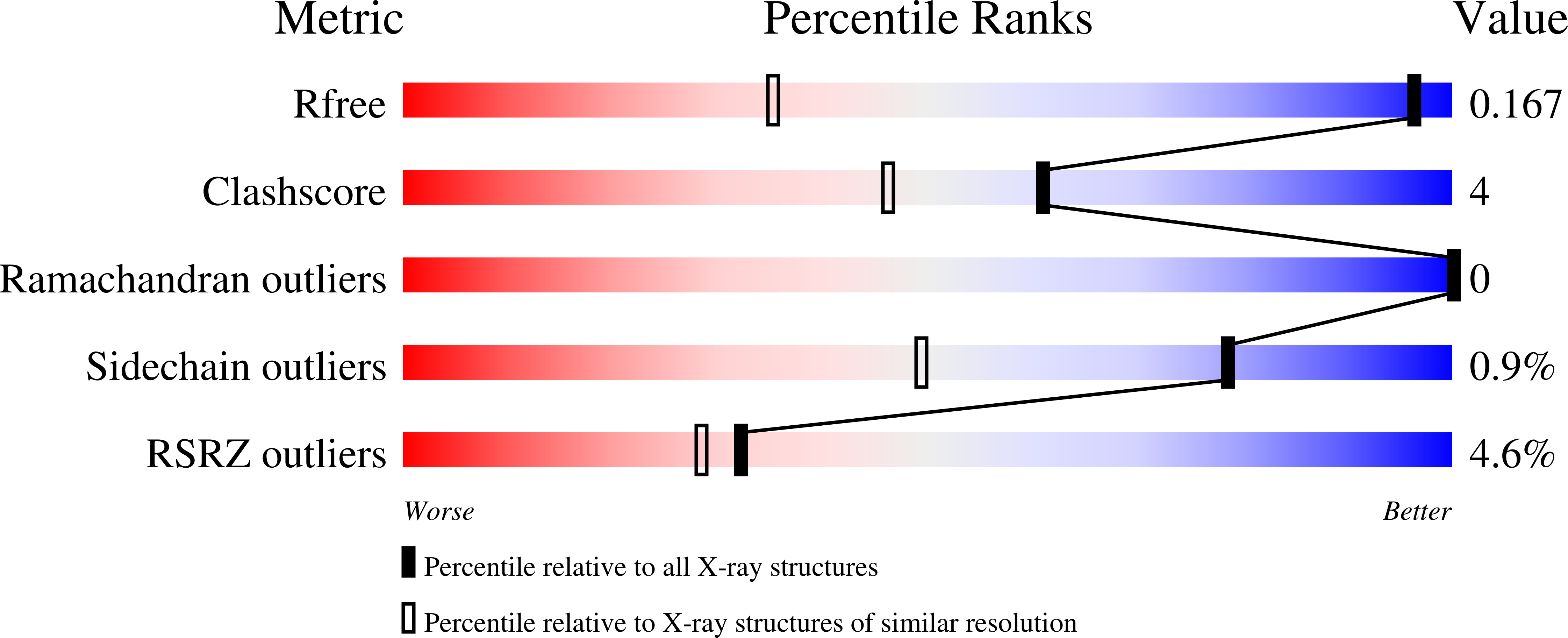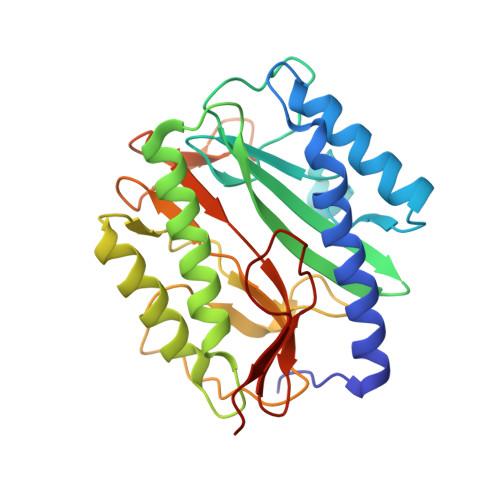Serendipitous discovery of novel bacterial methionine aminopeptidase inhibitors.
Evdokimov, A.G., Pokross, M., Walter, R.L., Mekel, M., Barnett, B.L., Amburgey, J., Seibel, W.L., Soper, S.J., Djung, J.F., Fairweather, N., Diven, C., Rastogi, V., Grinius, L., Klanke, C., Siehnel, R., Twinem, T., Andrews, R., Curnow, A.(2007) Proteins 66: 538-546
- PubMed: 17120228
- DOI: https://doi.org/10.1002/prot.21207
- Primary Citation of Related Structures:
2GG0, 2GG2, 2GG3, 2GG5, 2GG7, 2GG8, 2GG9, 2GGB, 2GGC - PubMed Abstract:
In this article we describe the application of structural biology methods to the discovery of novel potent inhibitors of methionine aminopeptidases. These enzymes are employed by the cells to cleave the N-terminal methionine from nascent peptides and proteins. As this is one of the critical steps in protein maturation, it is very likely that inhibitors of these enzymes may prove useful as novel antibacterial agents. Involvement of crystallography at the very early stages of the inhibitor design process resulted in serendipitous discovery of a new inhibitor class, the pyrazole-diamines. Atomic-resolution structures of several inhibitors bound to the enzyme illuminate a new mode of inhibitor binding.
Organizational Affiliation:
Structural Biology Core Facility, The Procter & Gamble Pharmaceuticals, Mason, Ohio 45040, USA. artem@xtals.org

















